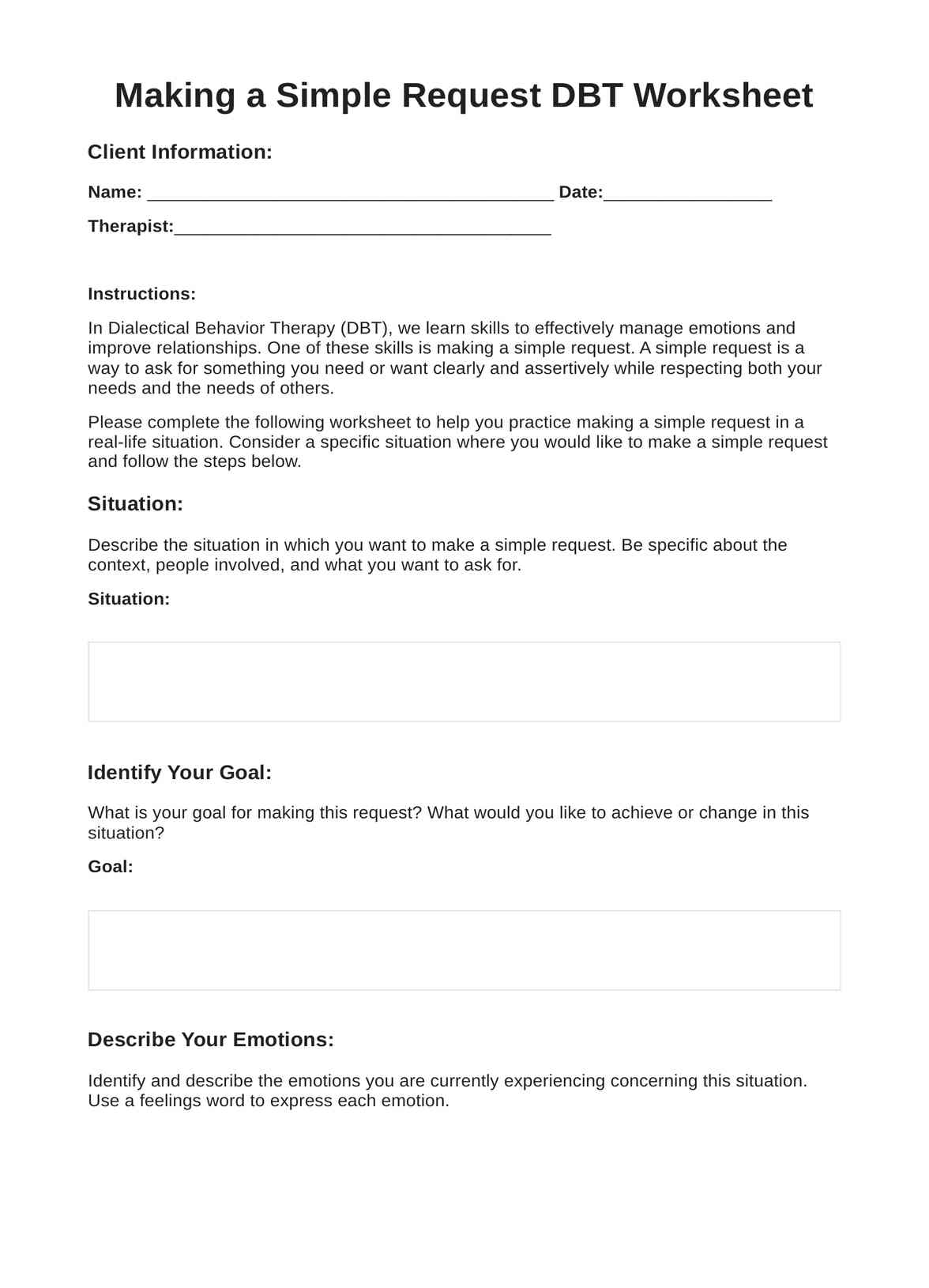The worksheet is designed for individuals seeking to improve their communication skills, emotional regulation, and interpersonal effectiveness. It's beneficial for those in therapy or counseling, but anyone looking to enhance their communication can find value.

Making a Simple Request DBT Worksheet
Enhance healthcare communication with the Making a Simple Request DBT Worksheet. Improve patient-practitioner dialogues effectively.
Making a Simple Request DBT Worksheet Template
Commonly asked questions
While you can use the worksheet independently, it may be more effective when integrated into therapy sessions. A therapist can provide guidance, feedback, and support as you work through real-life scenarios and practice making simple requests.
The worksheet can be applied to many situations where you need to make a request. These may include work-related requests, requests within personal relationships, or even requests related to healthcare preferences.
EHR and practice management software
Get started for free
*No credit card required
Free
$0/usd
Unlimited clients
Telehealth
1GB of storage
Client portal text
Automated billing and online payments











